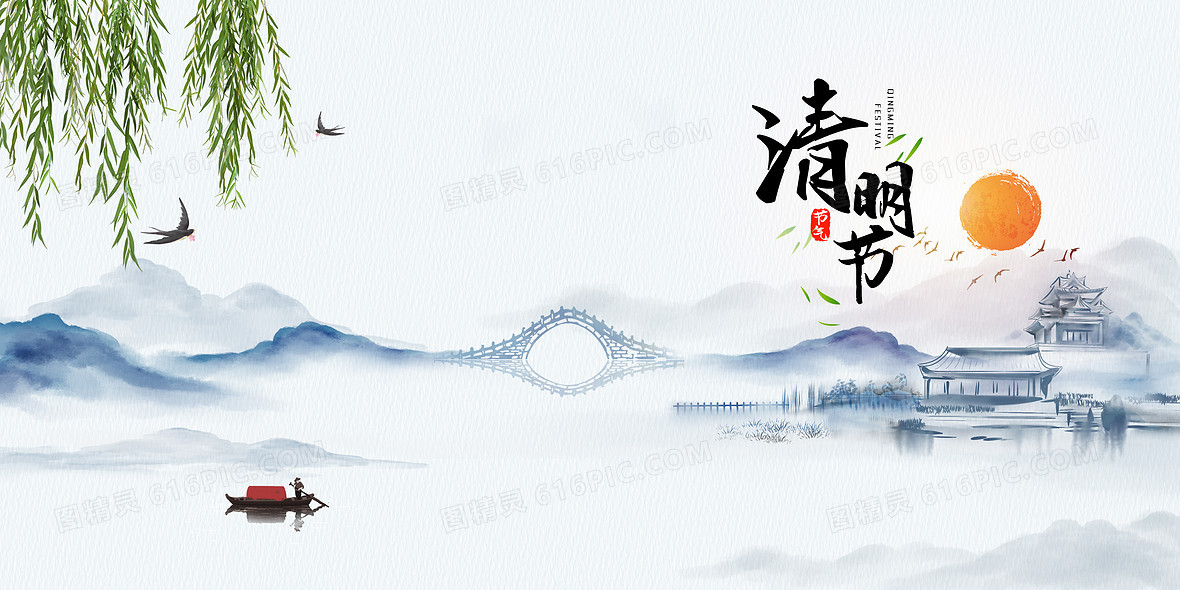Tomb-sweeping Festival, also known as Outing Qing Festival,, March Festival, Ancestor Worship Festival, etc., is held at the turn of mid-spring and late spring. Tomb-sweeping Day originated from the ancestor beliefs of early humans and the etiquette and customs of spring sacrifices. It is the most solemn and grand ancestor worship festival of the Chinese nation. Tomb-sweeping Festival has two connotations of nature and humanities. It is not only a natural solar term, but also a traditional festival. Tomb-sweeping and ancestor worship and outings are the two major etiquette themes of Chingming Festival. These two traditional etiquette themes have been passed down in China since ancient times and continue to this day.
The Tomb-sweeping Day is the most solemn and grand ancestor worship festival of the Chinese nation. It belongs to a traditional cultural festival that pays homage to ancestors and pursues them carefully. Tomb-sweeping Day embodies the national spirit, inherits the sacrificial culture of Chinese civilization, and expresses people’s moral feelings of respecting ancestors, respecting ancestors, and continuing to tell stories. Tomb-sweeping Day has a long history, originating from early human ancestor beliefs and spring festival rituals. According to the research results of modern anthropology and archaeology, the two most primitive beliefs of human beings are the belief in heaven and earth, and the belief in ancestors. According to archaeological excavations, a 10,000-year-old tomb was discovered at the Qingtang site in Yingde, Guangdong. The etiquette and customs of “Tomb Sacrifice” have a long history, and Ching Ming “Tomb Sacrifice” is the synthesis and sublimation of the traditional spring festival customs. The formulation of the Ganzhi calendar in ancient times provided the prerequisites for the formation of festivals. Ancestor beliefs and sacrificial culture are important factors in the formation of Ching Ming ancestor worship rituals and customs. The Ching Ming Festival is rich in customs, which can be summed up as two festival traditions: one is to pay respect to ancestors and pursue the distant future with caution; the other is to go outing in the green and get close to nature. Tomb-sweeping Festival not only has the themes of sacrifice, remembrance, and remembrance, but also has themes of outings and outings for physical and mental pleasure. The traditional concept of “harmony between man and nature” has been vividly reflected in Tomb-sweeping Festival. Sweeping the tomb is the “tomb sacrifice”, which is called “respect for the time” to the ancestors. The two sacrifices in spring and autumn have existed in ancient times. Through historical development, the Chingming Festival has integrated the customs of the Cold Food Festival and the Shangsi Festival in the Tang and Song Dynasties, and has mixed a variety of folk customs in many places, which has extremely rich cultural connotations.
Tomb-sweeping Day, together with Spring Festival, Dragon Boat Festival and Mid-Autumn Festival, are known as the four major traditional festivals in China. In addition to China, there are some countries and regions in the world that also celebrate Chingming Festival, such as Vietnam, South Korea, Malaysia, Singapore and so on.
Post time: Mar-31-2023





